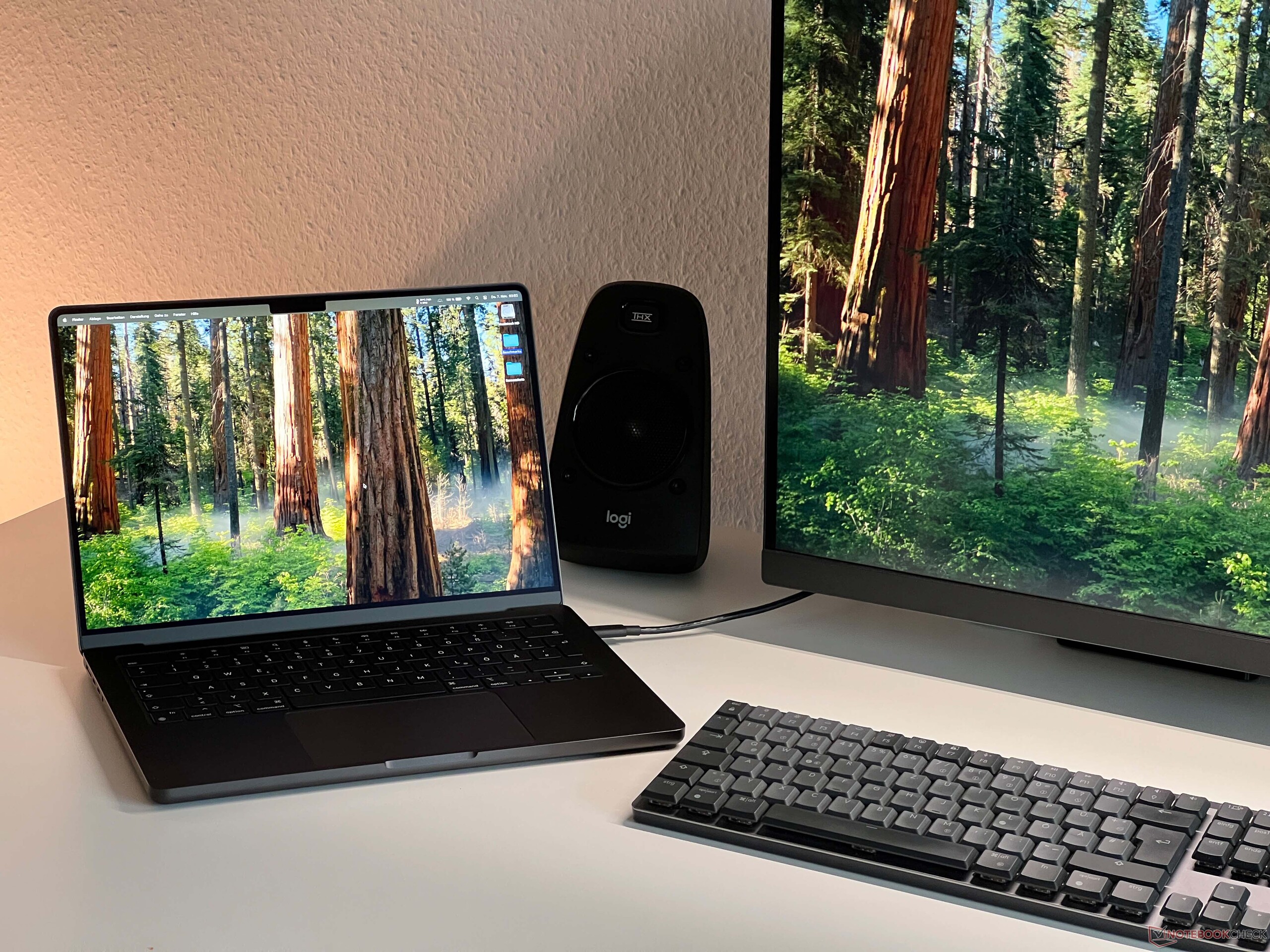
Apple MacBook Pro 14 2024 review - The M4 Pro and matte display are massive upgrades
Andreas Osthoff, 👁 Andreas Osthoff (translated by Daisy Dickson) Published 🇩🇪 🇫🇷 ...
Verdict - A lot more performance and finally with a matte display
Thanks to the new M4 Pro SoC, the 2024 version of the MacBook Pro 14 has been given a huge performance boost and in many cases, its processor performance is ahead of the old flagship M3 Max. At the same time, its power consumption has sunk. This is a remarkable achievement and Apple has further extended its lead in both multi-core and single-core performance. The new GPU has also become around 30% faster.
Additional highlights of course include its matte display option. The picture quality remains impressive, while the screen's matte surface proves to be a game changer if you often find yourself using your MacBook in bright surroundings or outdoors. Moreover, Apple has managed an improved SDR brightness of over 1,000 nits when using the ambient light sensor. Otherwise, the mini LED panel remains the reference in many respects—from its high brightness to how well it handles HDR content.
During everyday use, the MacBook Pro 14 stays silent or at least very quiet for a long time and its battery life is still great. However, we cannot yet identify any real improvement over the M3 generation.
In general, the M4 Pro requires more power than its predecessor, which is why the laptop's surface temperatures can get pretty high under load and can be particularly annoying around the keyboard area. Its lack of maintenance options in conjunction with Apple's enormous surcharges for memory/storage upgrades are further disadvantages. Its keyboard also still shows room for improvement.
Pros
Cons
Price and availability
The new MacBook Pro 14 is available to order from 8 November 2024. You can purchase it directly via Apple's website, with the small M4 Pro model with 24 GB RAM and a 512-GB SSD costing $1,999.
It is also available from online retailers such as Amazon, where the same model currently costs $1,949.
Possible alternatives compared
Image | Model / Review | Geizhals | Weight | Height | Display |
|---|---|---|---|---|---|
| Apple MacBook Pro 14 2024 M4 Pro Apple M4 Pro (14 cores) ⎘ Apple M4 Pro 20-Core GPU ⎘ 48 GB Memory, 2048 GB SSD | 1.6 kg | 15.5 mm | 14.20" 3024x1964 254 PPI MiniLED | ||
| Apple MacBook Pro 14 2023 M3 Max Apple M3 Max 16-Core ⎘ Apple M3 Max 40-Core GPU ⎘ 64 GB Memory, 2048 GB SSD | Listenpreis 5264€ Geizhals Suche | 1.6 kg | 15.5 mm | 14.20" 3024x1964 254 PPI Mini-LED | |
| Lenovo Yoga Pro 9-14IRP G8 Intel Core i7-13705H ⎘ NVIDIA GeForce RTX 4050 Laptop GPU ⎘ 32 GB Memory, 1024 GB SSD | Listenpreis 2300€ Geizhals Suche | 1.7 kg | 17.6 mm | 14.50" 3072x1920 250 PPI Mini-LED | |
| Dell XPS 14 2024 OLED Intel Core Ultra 7 155H ⎘ NVIDIA GeForce RTX 4050 Laptop GPU ⎘ 32 GB Memory, 1024 GB SSD | Listenpreis 2949€ Geizhals Suche | 1.8 kg | 19 mm | 14.50" 3200x2000 260 PPI OLED | |
| Razer Blade 14 RZ09-0508 AMD Ryzen 9 8945HS ⎘ NVIDIA GeForce RTX 4070 Laptop GPU ⎘ 32 GB Memory, 1024 GB SSD | Listenpreis 2700 USD Geizhals Suche | 1.9 kg | 17.99 mm | 14.00" 2560x1600 216 PPI IPS | |
| Asus ROG Zephyrus G14 2024 GA403U AMD Ryzen 9 8945HS ⎘ NVIDIA GeForce RTX 4070 Laptop GPU ⎘ 32 GB Memory, 1024 GB SSD | Listenpreis 2499€ Geizhals Suche | 1.5 kg | 16.3 mm | 14.00" 2880x1800 243 PPI OLED | |
| Microsoft Surface Laptop Studio 2 RTX 4060 Intel Core i7-13700H ⎘ NVIDIA GeForce RTX 4060 Laptop GPU ⎘ 64 GB Memory, 1024 GB SSD | 2 kg | 22 mm | 14.40" 2400x1600 200 PPI IPS |
Table of Contents
- Verdict - A lot more performance and finally with a matte display
- Specifications
- Case - The MacBook Pro now only in black or silver
- Connectivity - Thunderbolt 5 and a 12-MP camera
- Input devices - Comfortable keyboard, great haptic trackpad
- Display - Mini LED now optionally with a matte surface
- Performance - The M4 Pro with up to 48 GB RAM
- Emissions
- Power management - Unchanged battery life
- Notebookcheck total rating
Apple has launched the 2024 models of its MacBook Pro which, as expected, use the M4 processor generation. After the regular M4 SoC already made its debut in the iPad Pro, the M4 Pro/Max variants are now also available. Aside from more performance, this is the first time you can make use of Thunderbolt 5. The starting price for the new MacBook Pro 14 with the M4 Pro is $1,999. The price for our test sample is about $3,350. It comes with the faster M4 Pro variant, 48 GB RAM, a 2-TB SSD as well as the new nano-texture glass which we already know from the iMac.
Specifications
Case - The MacBook Pro now only in black or silver
The 2024 version of the MacBook Pro 14 now only comes in silver or black—irrespective of which processor you go for. Space Gray is no longer an option. Apart from this, we noted no changes in its case design. The 14-inch version of the MacBook Pro in particular looks relatively bulky due to its shape with a base unit that features a constant height—although it is by no means excessively thick, measuring in at 15.5 mm. The MacBook, with its unibody construction, still boasts excellent build quality. However, the black version is somewhat more susceptible to collecting dirt than the silver-colored model.
The hinges hold the screen lid in place super securely and it barely wobbles at all when you adjust its angle, however, the display's maximum opening angle is still only 135 degrees. The notch at the top display frame still doesn't look very aesthetically pleasing but even so, we prefer this solution over many of the camera bumps on competitor products. We also noted no functional limitations in this respect.
Connectivity - Thunderbolt 5 and a 12-MP camera
The basic connectivity of the MacBook Pro 14 with the M4 Pro/M4 Max hasn't changed much because, in addition to three USB-C ports, it also has a full HDMI output, MagSafe for charging and a full-sized SD card reader. However, the configurations with the M4 Pro/M4 Max now already support Thunderbolt 5 with a maximum transfer rate of 120 GB/s. The M4 Pro supports image output to two external displays (in addition to the internal screen), while the M4 Max supports a maximum of four external displays.
SD card reader
The card reader on the right-hand side doesn't fully take in SD cards, so it isn't suitable for permanent storage expansion. Its speed in conjunction with our reference card (Angelbird AV Pro V60) is great, as we measured a maximum of 231 MB/s and 161 MB/s when copying image files.
| SD Card Reader | |
| average JPG Copy Test (av. of 3 runs) | |
| Microsoft Surface Laptop Studio 2 RTX 4060 (Angelbird AV Pro V60) | |
| Apple MacBook Pro 14 2024 M4 Pro (Angelbird AV Pro V60) | |
| Apple MacBook Pro 14 2023 M3 Max (Angelbird AV Pro V60) | |
| Asus ROG Zephyrus G14 2024 GA403U (Angelbird AV Pro V60) | |
| Dell XPS 14 2024 OLED (Angelbird AV Pro V60) | |
| Average of class Multimedia (21.1 - 198, n=41, last 2 years) | |
| Lenovo Yoga Pro 9-14IRP G8 (Angelbird AV Pro V60) | |
| maximum AS SSD Seq Read Test (1GB) | |
| Apple MacBook Pro 14 2024 M4 Pro (Angelbird AV Pro V60) | |
| Apple MacBook Pro 14 2023 M3 Max (Angelbird AV Pro V60) | |
| Dell XPS 14 2024 OLED (Angelbird AV Pro V60) | |
| Asus ROG Zephyrus G14 2024 GA403U (Angelbird AV Pro V60) | |
| Microsoft Surface Laptop Studio 2 RTX 4060 (Angelbird AV Pro V60) | |
| Average of class Multimedia (27.4 - 262, n=41, last 2 years) | |
| Lenovo Yoga Pro 9-14IRP G8 (Angelbird AV Pro V60) | |
Communication
No changes have been made to its Wi-Fi module, as the Wi-Fi 6E standard and Bluetooth 5.3 are still supported. Its transfer rates were very good and stable in conjunction with our reference router from Asus, but it doesn't yet support the newer Wi-Fi 7 standard. Apple still doesn't offer any cellular network options (LTE/5G) for its MacBook Pro.
| Networking | |
| Apple MacBook Pro 14 2024 M4 Pro | |
| iperf3 transmit AXE11000 | |
| iperf3 receive AXE11000 | |
| Apple MacBook Pro 14 2023 M3 Max | |
| iperf3 transmit AXE11000 | |
| iperf3 receive AXE11000 | |
| Lenovo Yoga Pro 9-14IRP G8 | |
| iperf3 transmit AXE11000 | |
| iperf3 receive AXE11000 | |
| Dell XPS 14 2024 OLED | |
| iperf3 transmit AXE11000 | |
| iperf3 receive AXE11000 | |
| Razer Blade 14 RZ09-0508 | |
| iperf3 transmit AXE11000 | |
| iperf3 receive AXE11000 | |
| iperf3 transmit AXE11000 6GHz | |
| iperf3 receive AXE11000 6GHz | |
| Asus ROG Zephyrus G14 2024 GA403U | |
| iperf3 transmit AXE11000 | |
| iperf3 receive AXE11000 | |
| Microsoft Surface Laptop Studio 2 RTX 4060 | |
| iperf3 transmit AXE11000 | |
| iperf3 receive AXE11000 | |
Webcam
The webcam now features a 12 MP sensor and, as a result, a significantly higher resolution than before (2 MP). Plus, the webcam now supports follow mode (image follows the person as they move) and a desktop view, in which the area in front of the laptop is recorded in addition to the regular display, for example for displaying products. However, screenshots using the PhotoBooth app still have a low resolution (1,440 x 960 pixels) and the quality of recordings isn't much better than before, which also applies to videos (max. 1080p). Face ID is still not supported.

Maintenance
Sustainability
Apple provides extensive information on its environmental efforts, additionally providing a separate report for the MacBook Pro 14 on its website. For example, its packaging is made entirely without plastic and the MacBook itself is also made primarily from recycled materials. However, there are no maintenance or upgrade options for users.
Input devices - Comfortable keyboard, great haptic trackpad
The same as with its case, we can keep things short when it comes to the input devices on this year's model, as no changes have been made. Its black keyboard feels comfortable to type on despite its comparatively low travel. Even so, there are better keyboards on the market, such as on good business laptops or on competitor devices such as the Asus ROG Zephyrus G14. On the other hand, no Windows rival can keep up with how finely adjustable the MacBook's keyboard backlighting is.
Thanks to its brilliant software integration, the haptic trackpad can be classed as one of the best solutions in the laptop segment. Nothing has changed about this, but the competition has since managed to catch up, offering edge gestures (e.g. Huawei Matebook X Pro) and even some additional features. Apple still hasn't installed a touchscreen into its MacBooks.
Display - Mini LED now optionally with a matte surface
In general, Apple has chosen the same mini LED display as before for its new 2024 MacBook Pro 14. The screen diagonal of 14.2 inches has 3,072 x 1,964 pixels. Its basic aspect ratio is 16:10, with the 44 additional vertical pixels being used for the area next to the camera notch. Functionally, the notch doesn't get in the way of the display and in full-screen mode, the area next to the notch is simply hidden so that a standard 16:10 image is shown. If necessary, the screen increases its frequency to up to 120 Hz.
However, there are two new features that give this model a clear advantage over its predecessors. First of all, the display is now also available with nano-textured glass, i.e. with a matte finish. We are already familiar with this from the iMac and its Studio display, but on the MacBook Pro, the nano-texture filter is integrated directly into the polarization filter. Our test device features the matte panel (surcharge $150) and annoying reflections are now a thing of the past. Subjectively, the picture quality only suffers minimally in direct comparison with the normal panel, as the colors no longer appear quite as bright. However, we noted no grainy picture effect even when displaying bright content.
The second change concerns the display's brightness. In principle, its maximum SDR brightness is still just over 600 cd/m². However, when the brightness sensor is activated, its SDR brightness now reaches more than 1,000 cd/m² in bright environments (we were able to measure a maximum of 1,070 cd/m²). This means you no longer have to use additional apps. Its black level is 0, which results in an extremely high contrast ratio—plus, there are no halos. However, there is some visible ghosting, for example when the light mouse pointer moves on dark backgrounds. Both the brightness and the color temperature can be automatically adjusted to the ambient light.
In HDR mode, the panel can reach a maximum brightness of 1,706 cd/m², and still a very good 1,236 cd/m² when showing an almost completely white picture. At this point, we must once again praise Apple's HDR implementation. As soon as an application provides HDR signals, macOS recognizes this and then makes the higher brightness available in this area—whether in full screen or in image sections. Color management also remains active. Windows should really follow suit in this respect by now.
| |||||||||||||||||||||||||
Brightness Distribution: 95 %
Center on Battery: 638 cd/m²
Contrast: ∞:1 (Black: 0 cd/m²)
ΔE ColorChecker Calman: 0.6 | ∀{0.5-29.43 Ø4.78}
ΔE Greyscale Calman: 0.8 | ∀{0.09-98 Ø5}
89% AdobeRGB 1998 (Argyll 3D)
100% sRGB (Argyll 3D)
99.6% Display P3 (Argyll 3D)
Gamma: 2.22
CCT: 6430 K
| Apple MacBook Pro 14 2024 M4 Pro MiniLED, 3024x1964, 14.2", 120 Hz | Apple MacBook Pro 14 2023 M3 Max Mini-LED, 3024x1964, 14.2", 120 Hz | Lenovo Yoga Pro 9-14IRP G8 CSOT T3 MNE507HZ2-1, Mini-LED, 3072x1920, 14.5", 165 Hz | Dell XPS 14 2024 OLED SDC41A2, OLED, 3200x2000, 14.5", 120 Hz | Razer Blade 14 RZ09-0508 TL140ADXP04-0, IPS, 2560x1600, 14", 240 Hz | Asus ROG Zephyrus G14 2024 GA403U ATNA40CU05-0, OLED, 2880x1800, 14", 120 Hz | Microsoft Surface Laptop Studio 2 RTX 4060 LQ144P1JX01, IPS, 2400x1600, 14.4", 120 Hz | |
|---|---|---|---|---|---|---|---|
| Display | 0% | 0% | -1% | -2% | 0% | -19% | |
| Display P3 Coverage (%) | 99.6 | 99.2 0% | 92 -8% | 98.5 -1% | 96.9 -3% | 99.6 0% | 66.7 -33% |
| sRGB Coverage (%) | 100 | 99.7 0% | 100 0% | 99.8 0% | 100 0% | 99 -1% | |
| AdobeRGB 1998 Coverage (%) | 89 | 96.9 9% | 87.2 -2% | 85 -4% | 89.9 1% | 68.9 -23% | |
| Response Times | -8% | 84% | 99% | 90% | 99% | 26% | |
| Response Time Grey 50% / Grey 80% * (ms) | 77.2 ? | 80.8 ? -5% | 12.7 ? 84% | 0.7 ? 99% | 6 ? 92% | 0.62 ? 99% | 77.6 ? -1% |
| Response Time Black / White * (ms) | 71.6 ? | 78.8 ? -10% | 11.4 ? 84% | 0.77 ? 99% | 8.3 ? 88% | 0.68 ? 99% | 34.3 ? 52% |
| PWM Frequency (Hz) | 14880 ? | 14878 ? | 6000 ? | 480 | 960 ? | 17600 ? | |
| PWM Amplitude * (%) | 90 | ||||||
| Screen | -69% | -215% | -102% | -109% | -18% | -1% | |
| Brightness middle (cd/m²) | 638 | 610 -4% | 670 5% | 351 -45% | 484.1 -24% | 423 -34% | 511 -20% |
| Brightness (cd/m²) | 621 | 600 -3% | 680 10% | 353 -43% | 466 -25% | 424 -32% | 503 -19% |
| Brightness Distribution (%) | 95 | 96 1% | 89 -6% | 97 2% | 89 -6% | 98 3% | 89 -6% |
| Black Level * (cd/m²) | 0.19 | 0.38 | 0.01 | 0.26 | |||
| Colorchecker dE 2000 * | 0.6 | 1.7 -183% | 4 -567% | 1.7 -183% | 2.23 -272% | 0.7 -17% | 0.5 17% |
| Colorchecker dE 2000 max. * | 1.4 | 2.3 -64% | 4.5 -221% | 2.2 -57% | 4.57 -226% | 1.8 -29% | 1.1 21% |
| Greyscale dE 2000 * | 0.8 | 2.1 -163% | 4.9 -513% | 3.1 -288% | 1.6 -100% | 0.8 -0% | 0.8 -0% |
| Gamma | 2.22 99% | 2.22 99% | 2.22 99% | 2.12 104% | 2.24 98% | 2.18 101% | 2.19 100% |
| CCT | 6430 101% | 6874 95% | 5735 113% | 6616 98% | 6816 95% | 6505 100% | 6650 98% |
| Contrast (:1) | 3526 | 1274 | 42300 | 1965 | |||
| Colorchecker dE 2000 calibrated * | 1.3 | 0.8 | 0.74 | ||||
| Total Average (Program / Settings) | -26% /
-48% | -44% /
-102% | -1% /
-38% | -7% /
-44% | 27% /
8% | 2% /
-1% |
* ... smaller is better
Straight out of the box, the MacBook Pro 14 comes excellently calibrated. We analyzed it using the professional CalMAN software (X-Rite i1 Pro 2) and its grayscale and color results were amazing. There's no color cast, the color temperature is right and the color values' maximum DeltaE 2000 deviation compared to the P3 reference color space is 1.4—so far below the important limit of 3. The panel covers the sRGB color space as well as the P3 space completely.
Display Response Times
| ↔ Response Time Black to White | ||
|---|---|---|
| 71.6 ms ... rise ↗ and fall ↘ combined | ↗ 44.2 ms rise | |
| ↘ 27.4 ms fall | ||
| The screen shows slow response rates in our tests and will be unsatisfactory for gamers. In comparison, all tested devices range from 0.1 (minimum) to 240 (maximum) ms. » 100 % of all devices are better. This means that the measured response time is worse than the average of all tested devices (20.2 ms). | ||
| ↔ Response Time 50% Grey to 80% Grey | ||
| 77.2 ms ... rise ↗ and fall ↘ combined | ↗ 36.8 ms rise | |
| ↘ 40.4 ms fall | ||
| The screen shows slow response rates in our tests and will be unsatisfactory for gamers. In comparison, all tested devices range from 0.165 (minimum) to 636 (maximum) ms. » 99 % of all devices are better. This means that the measured response time is worse than the average of all tested devices (31.6 ms). | ||
Screen Flickering / PWM (Pulse-Width Modulation)
| Screen flickering / PWM detected | 14880 Hz Amplitude: 90 % | ≤ 100 % brightness setting | |
The display backlight flickers at 14880 Hz (worst case, e.g., utilizing PWM) Flickering detected at a brightness setting of 100 % and below. There should be no flickering or PWM above this brightness setting. The frequency of 14880 Hz is quite high, so most users sensitive to PWM should not notice any flickering. In comparison: 53 % of all tested devices do not use PWM to dim the display. If PWM was detected, an average of 8108 (minimum: 5 - maximum: 343500) Hz was measured. | |||
We noted a constant flickering of 14.88 kHz on the MacBook Pro's mini LED panel. This high frequency shouldn't be an issue for the vast majority of users, however, it does make it difficult to determine the screen's response times.
Thanks to its matte display surface and improved SDR brightness, the new MacBook Pro 14 is very well suited for outdoor use. Even in bright sunshine, all content remains perfectly recognizable as long as you avoid the direct reflection of the sun. This is a huge advantage over the old model and may be a reason for some users to switch. There are also no problems with its viewing-angle stability.
Performance - The M4 Pro with up to 48 GB RAM
The 2024 MacBook Pro 14 is available with a total of five different processors: M4, 2x M4 Pro & 2x M4 Max, each of which also affects the amount of RAM it can have. Models with the M4 Pro are available with either 24 or 48 GB RAM; for 36, 64 or 128 GB RAM, you'll have to go for the M4 Max SoCs. In this respect, the MacBook Pro also differs from the new Mac Mini, where the M4 Pro can be combined with up to 64 GB of RAM.
Testing conditions
Apple offers three different energy profiles: Low Charge, Automatic & High Performance, whereby we could not detect any difference in performance between the latter two. Only the fans were significantly louder under load (max. 44.5 vs. 56 dB(A)). We therefore carried out the following benchmarks and measurements using the preset Automatic mode. The Low Charge profile noticeably limits the SoC's performance (max. ~9.5 watts), but the fans stay extremely quiet or inaudible at all times (max. 25.1 dB(A) at ~2,400 rpm).
Processor - M4 Pro with 16 CPU cores
The new Apple M4 Pro is available in two configuration levels, either with 12 or 14 CPU cores. In each case, 4 efficiency cores and either 8 or 10 performance cores are combined. The more powerful M4 Pro, which is installed in our test device, is therefore on par with the smaller M4 Max. Overall, the core configuration has changed significantly compared to the old M3 generation. This also applies to its power consumption, because while the M3 Pro was very frugal with a maximum of 28 watts, the full configuration of the M4 Pro now reaches up to 46 watts and is much closer to the old M3 Max (max. 56 watts). Although the 46 watts cannot be maintained for long, its permanent consumption of around 40 watts is still significantly higher than before.
In turn, the new processor's performance is impressive. During the single-core tests (at a consumption of around 6-6.5 watts), it outperformed the old M3 generation by over 20%. It beat the fastest Snapdragon X Elite (X1E-81-100) by 39%. Intel and AMD fell even further behind and only the respective HX processors were faster (but also need a lot more power).
However, its multi-core performance is astonishing, as the M4 Pro outperformed the old M3 Max in both Cinebench 2024 and Geekbench (6-8%). Its performance also remains constant in battery mode. We will take a closer look at the efficiency of the new Apple M4 Pro in our analysis article, which will be published shortly.
| Cinebench 2024 / CPU Multi Core | |
| Average Apple M4 Pro (14 cores) (1662 - 1729, n=2) | |
| Apple MacBook Pro 14 2024 M4 Pro | |
| Apple MacBook Pro 14 2023 M3 Max | |
| Asus Vivobook S 15 OLED Snapdragon | |
| Apple MacBook Pro 16 2023 M3 Pro | |
| Average of class Multimedia (327 - 2069, n=65, last 2 years) | |
| Razer Blade 14 RZ09-0508 | |
| Apple MacBook Pro 14 2023 M3 Pro | |
| Samsung Galaxy Book4 Edge 16 X1E-84-100 | |
| Asus ROG Zephyrus G14 2024 GA403U | |
| Dell XPS 14 2024 OLED | |
| Cinebench 2024 / CPU Single Core | |
| Average Apple M4 Pro (14 cores) (177 - 178, n=2) | |
| Apple MacBook Pro 14 2024 M4 Pro | |
| Apple MacBook Pro 14 2023 M3 Pro | |
| Apple MacBook Pro 16 2023 M3 Pro | |
| Apple MacBook Pro 14 2023 M3 Max | |
| Samsung Galaxy Book4 Edge 16 X1E-84-100 | |
| Average of class Multimedia (72.5 - 200, n=48, last 2 years) | |
| Razer Blade 14 RZ09-0508 | |
| Dell XPS 14 2024 OLED | |
| Asus ROG Zephyrus G14 2024 GA403U | |
System performance
The new MacBook Pro 14 with the M4 Pro SoC is once again an extremely responsive laptop that responds to all inputs instantaneously. We noted no stability problems during our test and the new MBP was clearly at the top of the comparison field in the benchmarks. Apple has increased its memory bandwidth by almost a factor of 2 compared to the old M3 Pro models.
We will add the Puget Bench tests for Adobe Photoshop and Premiere Pro shortly.
WebXPRT 3: Overall
WebXPRT 4: Overall
Mozilla Kraken 1.1: Total
| CrossMark / Overall | |
| Apple MacBook Pro 14 2024 M4 Pro | |
| Average Apple M4 Pro (14 cores), Apple M4 Pro 20-Core GPU (2148 - 2162, n=2) | |
| Apple MacBook Pro 14 2023 M3 Max | |
| Lenovo Yoga Pro 9-14IRP G8 | |
| Razer Blade 14 RZ09-0508 | |
| Asus ROG Zephyrus G14 2024 GA403U | |
| Average of class Multimedia (866 - 2426, n=63, last 2 years) | |
| Microsoft Surface Laptop Studio 2 RTX 4060 | |
| Dell XPS 14 2024 OLED | |
| CrossMark / Productivity | |
| Apple MacBook Pro 14 2024 M4 Pro | |
| Average Apple M4 Pro (14 cores), Apple M4 Pro 20-Core GPU (1980 - 2010, n=2) | |
| Apple MacBook Pro 14 2023 M3 Max | |
| Razer Blade 14 RZ09-0508 | |
| Lenovo Yoga Pro 9-14IRP G8 | |
| Asus ROG Zephyrus G14 2024 GA403U | |
| Average of class Multimedia (913 - 2344, n=63, last 2 years) | |
| Microsoft Surface Laptop Studio 2 RTX 4060 | |
| Dell XPS 14 2024 OLED | |
| CrossMark / Creativity | |
| Apple MacBook Pro 14 2024 M4 Pro | |
| Average Apple M4 Pro (14 cores), Apple M4 Pro 20-Core GPU (2590 - 2594, n=2) | |
| Apple MacBook Pro 14 2023 M3 Max | |
| Lenovo Yoga Pro 9-14IRP G8 | |
| Microsoft Surface Laptop Studio 2 RTX 4060 | |
| Average of class Multimedia (907 - 2820, n=63, last 2 years) | |
| Asus ROG Zephyrus G14 2024 GA403U | |
| Razer Blade 14 RZ09-0508 | |
| Dell XPS 14 2024 OLED | |
| CrossMark / Responsiveness | |
| Razer Blade 14 RZ09-0508 | |
| Average Apple M4 Pro (14 cores), Apple M4 Pro 20-Core GPU (1556 - 1566, n=2) | |
| Apple MacBook Pro 14 2024 M4 Pro | |
| Lenovo Yoga Pro 9-14IRP G8 | |
| Asus ROG Zephyrus G14 2024 GA403U | |
| Apple MacBook Pro 14 2023 M3 Max | |
| Average of class Multimedia (605 - 2094, n=63, last 2 years) | |
| Microsoft Surface Laptop Studio 2 RTX 4060 | |
| Dell XPS 14 2024 OLED | |
| WebXPRT 3 / Overall | |
| Apple MacBook Pro 14 2024 M4 Pro | |
| Average Apple M4 Pro (14 cores), Apple M4 Pro 20-Core GPU (525 - 545, n=2) | |
| Apple MacBook Pro 14 2023 M3 Max | |
| Razer Blade 14 RZ09-0508 | |
| Average of class Multimedia (136.4 - 545, n=66, last 2 years) | |
| Lenovo Yoga Pro 9-14IRP G8 | |
| Microsoft Surface Laptop Studio 2 RTX 4060 | |
| Asus ROG Zephyrus G14 2024 GA403U | |
| Dell XPS 14 2024 OLED | |
| WebXPRT 4 / Overall | |
| Apple MacBook Pro 14 2024 M4 Pro | |
| Average Apple M4 Pro (14 cores), Apple M4 Pro 20-Core GPU (337 - 353, n=2) | |
| Average of class Multimedia (167.3 - 384, n=65, last 2 years) | |
| Microsoft Surface Laptop Studio 2 RTX 4060 | |
| Lenovo Yoga Pro 9-14IRP G8 | |
| Razer Blade 14 RZ09-0508 | |
| Dell XPS 14 2024 OLED | |
| Asus ROG Zephyrus G14 2024 GA403U | |
| Mozilla Kraken 1.1 / Total | |
| Dell XPS 14 2024 OLED | |
| Asus ROG Zephyrus G14 2024 GA403U | |
| Lenovo Yoga Pro 9-14IRP G8 | |
| Microsoft Surface Laptop Studio 2 RTX 4060 | |
| Razer Blade 14 RZ09-0508 | |
| Average of class Multimedia (228 - 835, n=69, last 2 years) | |
| Apple MacBook Pro 14 2023 M3 Max | |
| Apple MacBook Pro 14 2024 M4 Pro | |
| Average Apple M4 Pro (14 cores), Apple M4 Pro 20-Core GPU (254 - 255, n=2) | |
* ... smaller is better
Storage device
Our test device is equipped with the well-known 2 TB AP2048Z SSD, with 1.96 TB still available to the user after first starting up the device. The PCIe 4.0 drive's performance is very good. In addition, the MacBook Pro is still one of the few devices available with up to 8 TB of SSD storage. However, its lack of upgrade options and high surcharges are clear disadvantages. Further SSD benchmarks are listed here.
Graphics card
The two variants of the new M4 Pro are equipped with different graphics cards. The weaker model features 16 GPU cores, while the faster model in our test device has 20 GPU cores. This is an increase of 2 cores each compared to the old M3 Pro (14 and 18 GPU cores respectively). The M3 Pro's 18-core GPU consumed a maximum of 28 watts, while the M4 Pro consumes up to 32 watts. We cannot read out its GPU clock.
Its performance is once again outstanding, as we noted an increase of more than 30% compared to the old M3 Pro with the faster 18-core GPU. In the WildLife Extreme Unlimited test, the new M4 Pro GPU was even on par with the GeForce RTX 4070 Laptop in the Asus ROG Zephyrus G14.
When it comes to image/video editing or large renderings, its big shared memory is also a major advantage of the M4 GPU. Its GPU performance remains stable both in battery mode and under constant load. Further benchmarks and efficiency comparisons are available in our analysis article, which will be published shortly.
| 3DMark Steel Nomad Light Score | 7809 points | |
| 3DMark Steel Nomad Light Unlimited Score | 7818 points | |
Help | ||
Gaming performance
In addition to emulated games, more and more native games for Apple's M processors are coming onto the market. These include Baldur's Gate 3, Resident Evil Village and No Man's Sky. All of these games can be run without any problems and Baldur's Gate 3 runs smoothly at around 60fps even with maximum details in 1080p, making the MacBook on par with dedicated GPUs such as the RTX 4050 Laptop. Its performance when playing emulated games such as Cyberpunk is also not bad, although a native version is due to be launched next year. The device's gaming performance remains completely stable even during longer sessions.
| Total War Pharaoh - 1920x1080 Ultra Preset | |
| Apple MacBook Pro 14 2023 M3 Max | |
| Apple MacBook Pro 16 2023 M3 Pro | |
| Apple MacBook Pro 14 2023 M3 Pro | |
| Apple MacBook Pro 14 2024 M4 Pro | |
| Average of class Multimedia (23.4 - 56, n=12, last 2 years) | |
| Total War: Three Kingdoms - 1920x1080 Ultra (incl textures) | |
| Apple MacBook Pro 14 2023 M3 Max | |
| Apple MacBook Pro 14 2024 M4 Pro | |
| Average of class Multimedia (49.6 - 55, n=2, last 2 years) | |
| Apple MacBook Pro 16 2023 M3 Pro | |
| Apple MacBook Pro 14 2023 M3 Pro | |
| low | med. | high | ultra | QHD | |
|---|---|---|---|---|---|
| The Witcher 3 (2015) | 85 | 53 | |||
| Shadow of the Tomb Raider (2018) | 157 | 108 | 100 | 86 | 57 |
| Total War: Three Kingdoms (2019) | 186 | 108.4 | 76 | 55 | 35.6 |
| Baldur's Gate 3 (2023) | 89 | 77 | 63 | 61 | 42 |
| Cyberpunk 2077 (2023) | 50.1 | 48 | 44.6 | 39.6 | 24.9 |
| Total War Pharaoh (2023) | 64.4 | 55.2 | 51.2 | 50.6 | 49.5 |
Emissions
Noise emissions
As usual, the two fans either remain completely deactivated during most everyday tasks or operate at a low speed of ~2,500 rpm, which is practically inaudible at 25 dB(A). When the components are pushed harder, the fans increase their speed and quickly reach a maximum value of 44.5 dB(A). This is clearly audible and can be a bit annoying, especially during quiet game passages. In general, however, we noted no disturbing frequencies or other electronic noises. In High Performance mode, the fans get pretty annoying (56 dB(A)); conversely, they are almost always inaudible in Low Charge mode.
Noise level
| Idle |
| 23.9 / 23.9 / 23.9 dB(A) |
| Load |
| 30.2 / 44.5 dB(A) |
 | ||
30 dB silent 40 dB(A) audible 50 dB(A) loud |
||
min: | ||
| Apple MacBook Pro 14 2024 M4 Pro M4 Pro 20-Core GPU, M4 Pro (14 cores), Apple SSD AP2048Z | Apple MacBook Pro 14 2023 M3 Pro M3 Pro 14-Core GPU, Apple M3 Pro 11-Core, Apple SSD AP0512Z | Apple MacBook Pro 14 2023 M3 Max M3 Max 40-Core GPU, Apple M3 Max 16-Core, Apple SSD AP2048Z | Lenovo Yoga Pro 9-14IRP G8 GeForce RTX 4050 Laptop GPU, i7-13705H, Samsung PM9A1 MZVL21T0HCLR | Dell XPS 14 2024 OLED GeForce RTX 4050 Laptop GPU, Ultra 7 155H, Samsung PM9A1 MZVL21T0HCLR | Razer Blade 14 RZ09-0508 GeForce RTX 4070 Laptop GPU, R9 8945HS, Samsung PM9A1 MZVL21T0HCLR | Asus ROG Zephyrus G14 2024 GA403U GeForce RTX 4070 Laptop GPU, R9 8945HS, WD PC SN560 SDDPNQE-1T00 | Microsoft Surface Laptop Studio 2 RTX 4060 GeForce RTX 4060 Laptop GPU, i7-13700H, Kioxia XG8 KXG80ZNV1T02 | |
|---|---|---|---|---|---|---|---|---|
| Noise | 0% | 0% | -15% | -9% | -7% | -10% | -15% | |
| off / environment * (dB) | 23.9 | 24.1 -1% | 24.8 -4% | 24.8 -4% | 24.3 -2% | 24.3 -2% | 23.9 -0% | 23.9 -0% |
| Idle Minimum * (dB) | 23.9 | 24.1 -1% | 24.8 -4% | 24.8 -4% | 24.3 -2% | 25 -5% | 23.9 -0% | 23.9 -0% |
| Idle Average * (dB) | 23.9 | 24.1 -1% | 24.8 -4% | 24.8 -4% | 26.5 -11% | 25 -5% | 23.9 -0% | 24.4 -2% |
| Idle Maximum * (dB) | 23.9 | 24.1 -1% | 24.8 -4% | 24.8 -4% | 28.5 -19% | 25 -5% | 23.9 -0% | 26.9 -13% |
| Load Average * (dB) | 30.2 | 25.1 17% | 25.8 15% | 47.4 -57% | 37 -23% | 33 -9% | 46.2 -53% | 48.5 -61% |
| Cyberpunk 2077 ultra * (dB) | 44.5 | |||||||
| Load Maximum * (dB) | 44.5 | 49.4 -11% | 43.4 2% | 52.9 -19% | 43.3 3% | 51.9 -17% | 46.2 -4% | 51.8 -16% |
| Witcher 3 ultra * (dB) | 25.1 | 43.4 | 52.9 | 39.1 | 49.5 | 46.2 | 51.8 |
* ... smaller is better
Temperature
The metal case stays super cool in idle mode and during simple tasks, but we measured higher temperatures than with the predecessor models under high load or when gaming. In the middle upper keyboard area, we noted up to 47 °C, which can be annoying when in direct contact. The keycaps are a little cooler, but you do simply notice the high temperatures when typing. In this case, the device would have benefited from faster fans. On the underside, however, there are no problems with a maximum of 44 °C.
(-) The maximum temperature on the upper side is 47.3 °C / 117 F, compared to the average of 36.9 °C / 98 F, ranging from 21.1 to 71 °C for the class Multimedia.
(±) The bottom heats up to a maximum of 44.2 °C / 112 F, compared to the average of 39.2 °C / 103 F
(+) In idle usage, the average temperature for the upper side is 21.9 °C / 71 F, compared to the device average of 31.3 °C / 88 F.
(-) 3: The average temperature for the upper side is 38.9 °C / 102 F, compared to the average of 31.3 °C / 88 F for the class Multimedia.
(+) The palmrests and touchpad are reaching skin temperature as a maximum (33.1 °C / 91.6 F) and are therefore not hot.
(-) The average temperature of the palmrest area of similar devices was 28.7 °C / 83.7 F (-4.4 °C / -7.9 F).
| Apple MacBook Pro 14 2024 M4 Pro Apple M4 Pro (14 cores), Apple M4 Pro 20-Core GPU | Apple MacBook Pro 14 2023 M3 Max Apple M3 Max 16-Core, Apple M3 Max 40-Core GPU | Lenovo Yoga Pro 9-14IRP G8 Intel Core i7-13705H, NVIDIA GeForce RTX 4050 Laptop GPU | Dell XPS 14 2024 OLED Intel Core Ultra 7 155H, NVIDIA GeForce RTX 4050 Laptop GPU | Razer Blade 14 RZ09-0508 AMD Ryzen 9 8945HS, NVIDIA GeForce RTX 4070 Laptop GPU | Asus ROG Zephyrus G14 2024 GA403U AMD Ryzen 9 8945HS, NVIDIA GeForce RTX 4070 Laptop GPU | Microsoft Surface Laptop Studio 2 RTX 4060 Intel Core i7-13700H, NVIDIA GeForce RTX 4060 Laptop GPU | |
|---|---|---|---|---|---|---|---|
| Heat | -2% | -18% | -8% | -27% | -14% | -6% | |
| Maximum Upper Side * (°C) | 47.3 | 45.9 3% | 41 13% | 40.5 14% | 41.8 12% | 46.6 1% | 40.4 15% |
| Maximum Bottom * (°C) | 44.2 | 42.1 5% | 56.7 -28% | 42.6 4% | 42.2 5% | 47.8 -8% | 42.2 5% |
| Idle Upper Side * (°C) | 22.1 | 23.4 -6% | 27.4 -24% | 26.9 -22% | 34.8 -57% | 26.7 -21% | 26.6 -20% |
| Idle Bottom * (°C) | 22.1 | 23.8 -8% | 29.1 -32% | 27.8 -26% | 37.4 -69% | 27.8 -26% | 27 -22% |
* ... smaller is better
Stress test
During the stress test, the M4 Pro SoC briefly consumed up to 68 watts, with it then settling at around 40 watts in the further course. The distribution between CPU/GPU was fairly even. Overall, its behavior proved to be similar to the old M3 Pro, which was allowed to consume up to 55 watts. In the case of the larger MacBook Pro 16, however, this value could be maintained permanently.
Speakers
Nothing has changed about the excellent sound system consisting of 6 speakers inside the current model of the MacBook Pro 14. The competition may have caught up in the meantime, but there is no reason to complain about its performance. The built-in microphone also enables very clear voice recordings.
Apple MacBook Pro 14 2024 M4 Pro audio analysis
(+) | speakers can play relatively loud (84.9 dB)
Bass 100 - 315 Hz
(+) | good bass - only 4.6% away from median
(±) | linearity of bass is average (7.3% delta to prev. frequency)
Mids 400 - 2000 Hz
(+) | balanced mids - only 1.5% away from median
(+) | mids are linear (2.1% delta to prev. frequency)
Highs 2 - 16 kHz
(+) | balanced highs - only 2.6% away from median
(+) | highs are linear (3.9% delta to prev. frequency)
Overall 100 - 16.000 Hz
(+) | overall sound is linear (5.9% difference to median)
Compared to same class
» 3% of all tested devices in this class were better, 1% similar, 97% worse
» The best had a delta of 5%, average was 17%, worst was 45%
Compared to all devices tested
» 0% of all tested devices were better, 0% similar, 100% worse
» The best had a delta of 4%, average was 24%, worst was 134%
Apple MacBook Pro 14 2023 M3 Max audio analysis
(+) | speakers can play relatively loud (85 dB)
Bass 100 - 315 Hz
(+) | good bass - only 4.9% away from median
(±) | linearity of bass is average (8.4% delta to prev. frequency)
Mids 400 - 2000 Hz
(+) | balanced mids - only 1.2% away from median
(+) | mids are linear (2.8% delta to prev. frequency)
Highs 2 - 16 kHz
(+) | balanced highs - only 2.6% away from median
(+) | highs are linear (2.6% delta to prev. frequency)
Overall 100 - 16.000 Hz
(+) | overall sound is linear (5.6% difference to median)
Compared to same class
» 2% of all tested devices in this class were better, 1% similar, 97% worse
» The best had a delta of 5%, average was 17%, worst was 45%
Compared to all devices tested
» 0% of all tested devices were better, 0% similar, 100% worse
» The best had a delta of 4%, average was 24%, worst was 134%
Lenovo Yoga Pro 9-14IRP G8 audio analysis
(±) | speaker loudness is average but good (81.8 dB)
Bass 100 - 315 Hz
(±) | reduced bass - on average 5.9% lower than median
(±) | linearity of bass is average (7.8% delta to prev. frequency)
Mids 400 - 2000 Hz
(+) | balanced mids - only 2.3% away from median
(+) | mids are linear (3.2% delta to prev. frequency)
Highs 2 - 16 kHz
(+) | balanced highs - only 2.5% away from median
(+) | highs are linear (3.4% delta to prev. frequency)
Overall 100 - 16.000 Hz
(+) | overall sound is linear (7.3% difference to median)
Compared to same class
» 5% of all tested devices in this class were better, 1% similar, 95% worse
» The best had a delta of 5%, average was 17%, worst was 45%
Compared to all devices tested
» 1% of all tested devices were better, 0% similar, 99% worse
» The best had a delta of 4%, average was 24%, worst was 134%
Asus ROG Zephyrus G14 2024 GA403U audio analysis
(+) | speakers can play relatively loud (84.7 dB)
Bass 100 - 315 Hz
(+) | good bass - only 3.5% away from median
(±) | linearity of bass is average (7.3% delta to prev. frequency)
Mids 400 - 2000 Hz
(+) | balanced mids - only 3.8% away from median
(+) | mids are linear (3.6% delta to prev. frequency)
Highs 2 - 16 kHz
(+) | balanced highs - only 1.4% away from median
(+) | highs are linear (3.5% delta to prev. frequency)
Overall 100 - 16.000 Hz
(+) | overall sound is linear (5.8% difference to median)
Compared to same class
» 0% of all tested devices in this class were better, 0% similar, 100% worse
» The best had a delta of 6%, average was 18%, worst was 132%
Compared to all devices tested
» 0% of all tested devices were better, 0% similar, 100% worse
» The best had a delta of 4%, average was 24%, worst was 134%
Power management - Unchanged battery life
Power consumption
Apple has managed to reduce its idle power consumption slightly; at a maximum SDR brightness of around 600 cd/m², we measured a peak of 11 watts. However, this value can get significantly higher when displaying HDR content or in bright environments with the brightness sensor activated. Under load, the new MBP 14 consumes 75-90 watts. In the stress test, it briefly reached up to 98 watts, but the value then dropped again quickly. The supplied 96-watt power supply unit is therefore sufficient in size, but it doesn't have many reserves left to charge the battery quickly under full load.
| Off / Standby | |
| Idle | |
| Load |
|
Key:
min: | |
| Apple MacBook Pro 14 2024 M4 Pro M4 Pro (14 cores), M4 Pro 20-Core GPU, Apple SSD AP2048Z, MiniLED, 3024x1964, 14.2" | Apple MacBook Pro 14 2023 M3 Pro Apple M3 Pro 11-Core, M3 Pro 14-Core GPU, Apple SSD AP0512Z, Mini-LED, 3024x1964, 14.2" | Apple MacBook Pro 14 2023 M3 Max Apple M3 Max 16-Core, M3 Max 40-Core GPU, Apple SSD AP2048Z, Mini-LED, 3024x1964, 14.2" | Lenovo Yoga Pro 9-14IRP G8 i7-13705H, GeForce RTX 4050 Laptop GPU, Samsung PM9A1 MZVL21T0HCLR, Mini-LED, 3072x1920, 14.5" | Dell XPS 14 2024 OLED Ultra 7 155H, GeForce RTX 4050 Laptop GPU, Samsung PM9A1 MZVL21T0HCLR, OLED, 3200x2000, 14.5" | Razer Blade 14 RZ09-0508 R9 8945HS, GeForce RTX 4070 Laptop GPU, Samsung PM9A1 MZVL21T0HCLR, IPS, 2560x1600, 14" | Asus ROG Zephyrus G14 2024 GA403U R9 8945HS, GeForce RTX 4070 Laptop GPU, WD PC SN560 SDDPNQE-1T00, OLED, 2880x1800, 14" | Microsoft Surface Laptop Studio 2 RTX 4060 i7-13700H, GeForce RTX 4060 Laptop GPU, Kioxia XG8 KXG80ZNV1T02, IPS, 2400x1600, 14.4" | Average Apple M4 Pro 20-Core GPU | Average of class Multimedia | |
|---|---|---|---|---|---|---|---|---|---|---|
| Power Consumption | 3% | -15% | -124% | -54% | -264% | -49% | -0% | -27% | -39% | |
| Idle Minimum * (Watt) | 2.17 | 2.3 -6% | 2.6 -20% | 10.9 -402% | 8.1 -273% | 20.9 -863% | 6.9 -218% | 3 -38% | 3.39 ? -56% | 6 ? -176% |
| Idle Average * (Watt) | 10.9 | 13.1 -20% | 11.8 -8% | 17.7 -62% | 9.9 9% | 25.6 -135% | 8.6 21% | 7.1 35% | 13.9 ? -28% | 10.5 ? 4% |
| Idle Maximum * (Watt) | 11 | 13.3 -21% | 12.2 -11% | 19.3 -75% | 10.4 5% | 32.1 -192% | 9 18% | 7.6 31% | 14.1 ? -28% | 12.6 ? -15% |
| Load Average * (Watt) | 74.3 | 47.4 36% | 99.9 -34% | 93.3 -26% | 75.6 -2% | 72.7 2% | 75.2 -1% | 73.1 2% | 75.4 ? -1% | 69.3 ? 7% |
| Cyberpunk 2077 ultra external monitor * (Watt) | 80.5 | |||||||||
| Load Maximum * (Watt) | 98.1 | 73.6 25% | 101.7 -4% | 150.2 -53% | 107.1 -9% | 228.4 -133% | 161.6 -65% | 128.5 -31% | 118.1 ? -20% | 115.2 ? -17% |
| Witcher 3 ultra * (Watt) | 42.8 | 92.5 | 129.5 | 65.6 | 182.1 | 109.7 | 113.9 |
* ... smaller is better
Power consumption Cyberpunk / stress test
Power consumption with external monitor
Runtimes
Its battery capacity is still 72.6 Wh and the laptop's runtimes in our WLAN test were also on par with the previous generation, although there are slight differences depending on the chip. At a brightness of 150 cd/m² (8 steps down from the maximum SDR brightness), we measured just under 16 hours, which is well ahead of the Windows competition in our comparison group. At full SDR brightness, the WLAN test still ran for around 6.5 hours. We will add further battery runtimes in the next few days.
| Apple MacBook Pro 14 2024 M4 Pro M4 Pro (14 cores), M4 Pro 20-Core GPU, 72.6 Wh | Apple MacBook Pro 14 2023 M3 Max Apple M3 Max 16-Core, M3 Max 40-Core GPU, 72.6 Wh | Apple MacBook Pro 14 2023 M3 Pro Apple M3 Pro 11-Core, M3 Pro 14-Core GPU, 72.6 Wh | Lenovo Yoga Pro 9-14IRP G8 i7-13705H, GeForce RTX 4050 Laptop GPU, 75 Wh | Dell XPS 14 2024 OLED Ultra 7 155H, GeForce RTX 4050 Laptop GPU, 69.5 Wh | Razer Blade 14 RZ09-0508 R9 8945HS, GeForce RTX 4070 Laptop GPU, 68 Wh | Asus ROG Zephyrus G14 2024 GA403U R9 8945HS, GeForce RTX 4070 Laptop GPU, 73 Wh | Microsoft Surface Laptop Studio 2 RTX 4060 i7-13700H, GeForce RTX 4060 Laptop GPU, 58 Wh | Average of class Multimedia | |
|---|---|---|---|---|---|---|---|---|---|
| Battery runtime | |||||||||
| WiFi v1.3 (h) | 15.8 | 15.2 -4% | 16.3 3% | 8 -49% | 7.8 -51% | 7.1 -55% | 9.3 -41% | 8.3 -47% | 11.3 ? -28% |
Notebookcheck total rating
With its new M4 Pro processor, Apple has taken the MacBook Pro 14 to a new level of performance and further extended its lead over Intel, AMD and Qualcomm. Its runtimes are still great and the new matte panel option is very exciting, especially if you often use your device outdoors or in very bright environments. Other upgrades include Thunderbolt 5 and a 12 MP camera with an extended range of functions. However, you will have to do without Wi-Fi 7. All-in-all, the new MacBook Pro 14 M4 Pro is a very good and powerful laptop but as usual, this comes at a price.
Apple MacBook Pro 14 2024 M4 Pro
- 11/14/2024 v8
Andreas Osthoff
Transparency
The selection of devices to be reviewed is made by our editorial team. The test sample was provided to the author as a loan by the manufacturer or retailer for the purpose of this review. The lender had no influence on this review, nor did the manufacturer receive a copy of this review before publication. There was no obligation to publish this review. As an independent media company, Notebookcheck is not subjected to the authority of manufacturers, retailers or publishers.
This is how Notebookcheck is testing
Every year, Notebookcheck independently reviews hundreds of laptops and smartphones using standardized procedures to ensure that all results are comparable. We have continuously developed our test methods for around 20 years and set industry standards in the process. In our test labs, high-quality measuring equipment is utilized by experienced technicians and editors. These tests involve a multi-stage validation process. Our complex rating system is based on hundreds of well-founded measurements and benchmarks, which maintains objectivity. Further information on our test methods can be found here.





















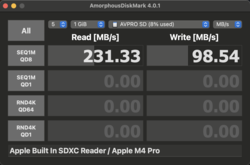


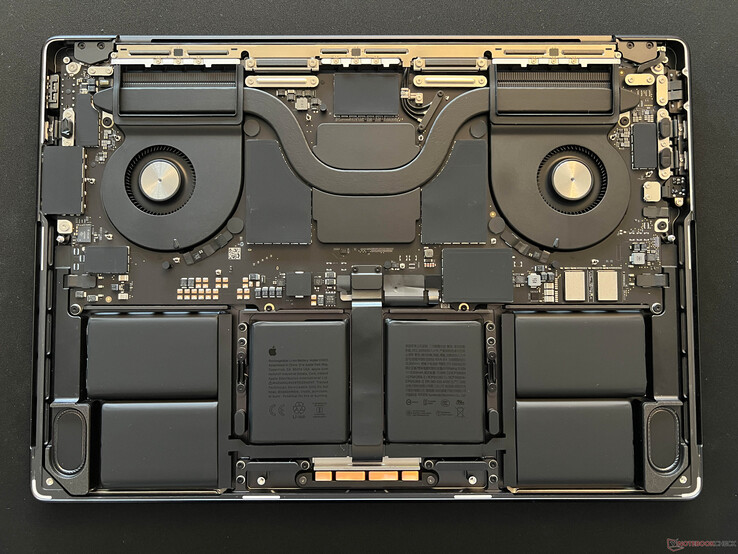
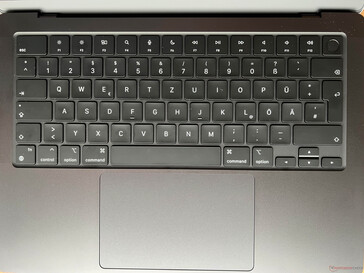
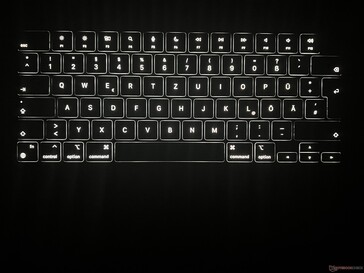
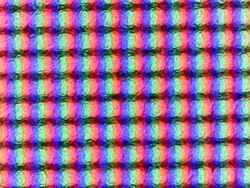
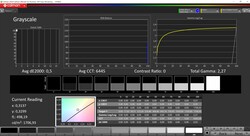
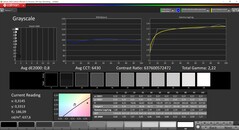
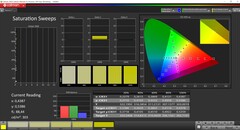


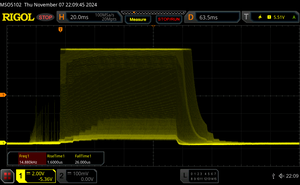
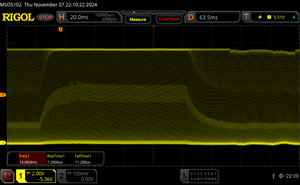
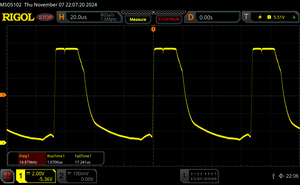





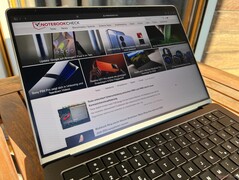
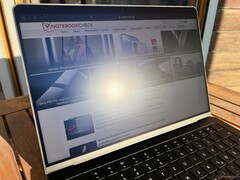
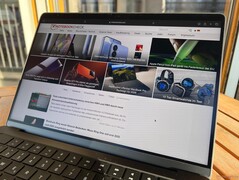
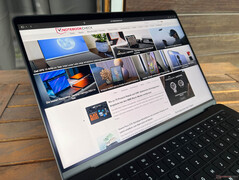
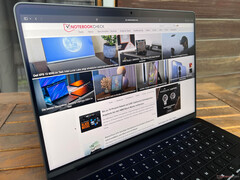


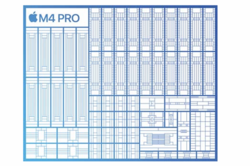
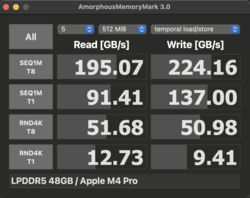
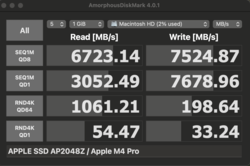
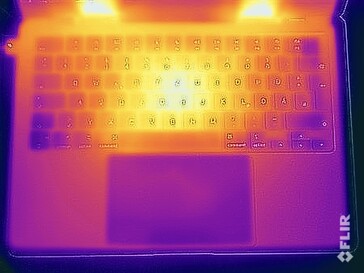
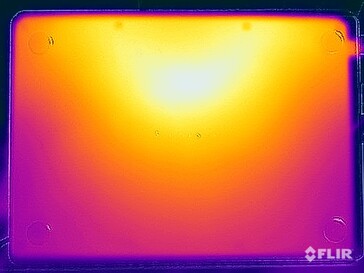
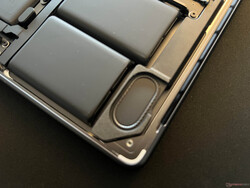

 Total Sustainability Score:
Total Sustainability Score: 

